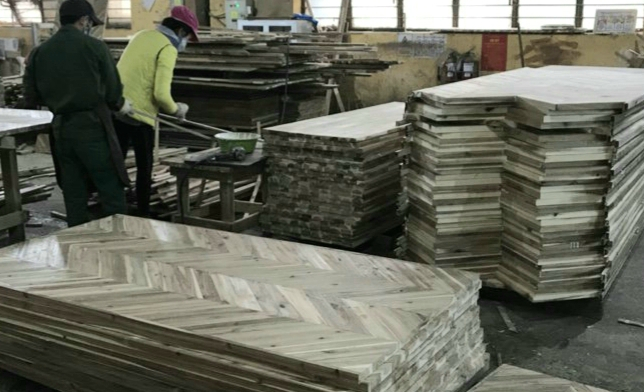The construction sector is experiencing an unprecedented moment in the EU when the market for construction timber is scarce and rapidly increasing in price.
The EU construction wood market has been active since the summer of 2020, along with other building materials. According to the Daily, the high price of wood is the main cause of difficulty for the construction industry.
In France, which has the fourth largest forest area in the EU, it still lacks construction timber. The law of supply and demand, when there is scarcity, the price will have to increase. The price of sawn timber in France has increased from 200 Euro/m³ to 280 Euro/m³. This is the price to buy right at the sawmill in the mountains of Northeastern France. Far away from the raw material area, the West of France is still dependent on imported wood, the price of sawn timber is up to 500 Euro/m³.
In particular, the price of industrial plywood increased. The prices of these products have increased from 400 Euro/1m³ to more than 1,000 Euro/1m³. According to the Federation of Building Materials Business Enterprises, the wood market has never been so out of control.
The construction sector is experiencing an unprecedented moment in the EU. According to the Spanish newspaper Faro de Vigo last week, the cost of materials increased, pushing construction costs up 15%. A large proportion of wood from Central and Northern Europe, from France, Chile and Brazil is being kept for local consumption, or directed to other more profitable markets such as the US or China or Germany.
In the wood market, China, on the one hand, uses up all the wood produced in China, while increasing imports as much as possible from other countries. The pandemic has caused the construction sector to grow strongly around the world, causing the demand for construction timber to be at an all-time high.
The price of cross-laminated wood is booming right now and demand will double worldwide in the next two years. One of the reasons driving the timber market is changing consumer consciousness. Now, a lot of people understand that it is not possible to continue producing energy-intensive building materials, leading to huge CO2 emissions. Using wood will be more environmentally friendly.

Notably, an increase in the price of a widely used plywood substitute threatens to drive up home construction costs even as the North American lumber market declines. Oriented fiber board, or OSB (oriented particle board), bonded woodchip panels commonly used as cladding for walls, floors and roofs in new home construction, is at record highs, in part due to hurricanes. Winter storms in Texas reduce the supply of plastic needed to make the product.
A rebound in demand and a bottoming out borrowing rate surprised the timber industry last year, with the construction industry surging early in the pandemic at a time when timber inventories and OSB were low. While there are signs that lumber mills are catching up, the combination of a strong residential construction market and tight supply has boosted the prices of some OSB products by more than seven times in the past year and cause delays in delivery.
According to Fastmarkets Random Lengths, this week in Western Canada, the 76-inch-thick OSB price was at $1,700/1,000 feet, the highest price ever. This price is higher than the price of 1,660 USD a month ago and higher than the price of 240 USD a year ago.
In addition, fabricators are facing two to four week delays for orders shipped from factories. In the US Southeast, mills are selling the same OSB at a record $1,160 per 1,000 square feet, a level first hit last week.
This is up from $1,115 a month ago and quadrupled from $288 a year earlier. Orders will take about two weeks to be shipped from the factory. The rally comes after US timber futures peaked at $1,733.50 per 1,000 feet in May 2021, more than quadrupling in price within a year.
